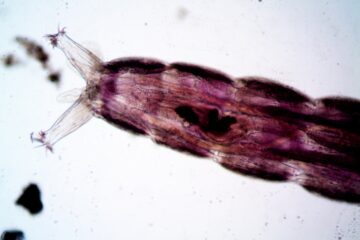![]()
Introduction:
Section 44 of the Indian Penal Code specifies the definition of injury. It states that injury is any particular harm to the body, mind reputation, or the property of an individual. It denotes all sorts of injury under these criteria only.[1] Medical jurisprudence deals with matters that highlight the relation between medicine and law. It is the implementation of medical knowledge in legal matters. This branch becomes important in matters that deal with any sort of harm or injury. In addition to the medico-legal aspects of injury dealing with the legality of any sort of harm suffered by an individual, the justice system of the same highly depends on the medical facts and proof of the harm, therefore, increasing the importance of this branch. The term injury usually means any sort of bodily damage suffered by an individual, this damage can be related to the body, mind reputation, or the property of an individual. There are different classifications given of injury. They are broadly divided into 2 major subgroups: mechanical and thermal. Mechanical injuries are further divided into 6 categories: abrasions, contusions, lacerations, stab injury, incised wounds, and firearm injuries. Thermal injuries are also divided into categories such as burns and scalds, frostbite, chemical burns, radial burns, and electric burns.[2]
Medico-legal classifies injury into severity, mode of death, and moment of death. Injuries supported severity: simple and grievous injuries, supported mode of death: suicidal, homicidal, and accidental injuries, and supported a moment of death: ante-mortem and post-mortem.[3] Each of these classifications has different medico-legal aspects attached to it. Courts often deliver justice keeping in mind the medico-legal aspects with it and the legal opinion attached to the report.
It is important to understand and determine the medico-legal aspects of the case so that justice can be delivered this is because the laws related to unnatural death depend on these aspects and have various levels of punishment based on the medico-legal aspects. It all together plays an important role in analyzing the facts pertaining to the death of an individual. The entire report of the death relies on the details of these aspects on which later on justice is delivered. Every unnatural death is different and therefore it is necessary to investigate the minute details pertaining to the death of that individual leading to right justice, therefore these aspects are formed to provide true and right justice to individuals after analyzing the cause behind it.
Internationally medico-legal aspects and the usage of this system varies. In the United States Of America, the medical examiner system persists. Under this system, a trained individual investigates the unusual deaths that are taken place, form the post mortem reports, and initiate inquests. In most of the European countries and their previous colonies, Code Napoleon is followed and practiced.
Classification of Injuries and their Medico-legal Aspects
- Incised Injuries are those injuries that are caused by sharp-edged objects and have clear cut separation of tissues, injuries where the length is more than the depth. The importance of medico-legal aspects is: the character of the weapon is often confirmed to be sharp-edged, determination of the age of injury was possible, the direction of applied force is often determined from the tail of the wound and homicidal incised wounds are frequent.
- Abrasion injuries affect the superficial layer of the epidermis and its medico-legal aspects are: Age of the injury are often determined, pattern abrasion can help us identify the sort of weapon used, abrasions on the face of a suspect can indicate a struggle, and suicidal abrasions are rare, seen only in accidents and homicides.
- Lacerations are injuries because of tearing from the skin, its medico-legal aspects are: These injuries can indicate the form of the blunt weapon, determining age in uninfected lacerations is sort of useful, foreign bodies found within the wound site might help us reconstruct the circumstances during the commission of a crime, these wounds are generally seen in accidents and assaults. They’re generally considered grievous injuries.
- Stab wounds are produced due to knives, daggers, or swords. Their medico-legal aspects are: Stab wounds are majorly homicidal or suicidal. Accidental wounds are very infrequent, the depth of the wound shall signify the penetration force, age of the injury is often estimated.
- Burn injuries are produced because of the application of warmth, during this, the aspects are: Presence of smoke within the respiratory passage of the victim indicates he or she was alive when a fire started, raised carboxyhemoglobin inside the blood. the share often exceeds 10% and presence of line within the region adjacent to the burns.
- Contusions are caused because of blunt force, its aspects are: Self-inflicted bruises are rare, are often homicidal, suicidal, or accidental, shape and size of the bruise are analogous to the character of the weapon, and therefore the age of the injury are often determined.[4]
Adding on to this,the medico-legal aspects of electricalcurrent are: Suicidal electrocution is rare but might occur in mentally unsound people, homicidal electrocutions are more frequent, the location of entrance could also bediagnosed histochemical by seeing deposition of metal particles on the skin. Grievous hurt is mentioned in Section 320 of IPC.[5]
Section 320 of IPC
Section 320 of IPC specifies all the harms that are specified as grievous hurt. Grievous hurt includes:[6]
- Emasculation
- Losing the power to envision by either eye permanently
- Losing the facility of hearing of either ear permanently
- Privation of any member or joint
- Destroying or permanent impairment of the power of any member or joint
- Deformation of head or face permanently
- Bone or tooth getting fractured or dislocated
- Any hurt which endangers life or which causes severe pain to the individual or he’s unable to try and do his daily activities for 20 days
Laws related to these Injuries
Section 321[7] defines voluntarily causing harm, section 322[8] defines voluntarily causing grievous harm. Adding to this, section 323 to 338A[9] of the Indian Penal Court specify the punishments for these offenses. All these offenses specified in 326A to 338A[10] have different punishments specified for each of them. The punishments range from imprisonment for 2 years to even death sentence. For example, Section 326A[11] is for anyone who voluntarily causes grievous hurt to both eyes and head which is sentenced to death or given life imprisonment punishment. Section 338 A[12] which is for anyone who engages in rash driving and causes grievous hurt will be imprisoned for 2 years.
Section 351[13] of the IPC specifies the definition of assault; a threat/attempt to apply force or do a harmful action.
Case Laws
In the case of Ram Lal vs State of Rajasthan the convict was booked under sections 323,326 and 341 of IPC and was given the punishment under section 341 of IPC.[14] The facts of the case are that the convict dealt an axe blow on the head of Omprakash with the result that he died of that injury. He then entered the house of Ram Narain who was ailing and sitting on his cot and gave an axe blow on the head of Ram Narain also and so ran away along with his axe to his village. Therefore owing to the grievous injury caused by Ram Lal he was booked under these sections. additionally to the present because the convict was of 62 years aged and had already passed 15 years in trial and was under custody for 2 and a half months, the court understood these parameters and removed the death sentence after paying the fine under these offenses.
Another interesting case is that the case of Subhash Chandra Bose vs State of Kerala. The facts of this case are the accused obstructed the de facto complainant on the general public road, hit and fall case, the defendants took the defense that it had been accidentally and not due to the hit. The matter was sorted by the parties, they settled the matter and came to terms. The court found the whole case very suspicious and allowed the appeal, the charges under section 326 were put aside.
Adding on to this another very interesting case is that of Murari Lal Sharma vs State of Bihar. The facts of the case are that the plaintiff was soliciting the payment from the accused for repairing one of his commodities, reciprocally of this, the accused charged the petitioner under criminal offense without proof and fact and completely false. The defendant further said that the petitioner was booked for stealing a car and was trying to run away. The petitioner was caused grievous harm because of the actions of the accused, both his eyes were damaged. The defendants said that it had been thanks to a touch against the wall. The case was held in the favour of the defendants and therefore the complaint was quashed.
All the three cases mentioned above are very different from one another but highlight the importance of medico-legal aspects of the injuries to understand the case better and deliver justice keeping in mind the essentials of the offenses. within the case of Murari Lal Sharma vs the State of Bihar, the convict couldn’t be booked under section 326A because the report from the doctor clothed to point out that the injury wasn’t serious and thus the eyes were normal post the injury and therefore there was no permanent damage to the eyes. Adding to the present the injury wasn’t voluntarily done and hence the accused couldn’t be booked for this offense.
Conclusion
Throughout the study, it’s pretty evident that the medico-legal aspects of injury are vital while delivering justice. The opinions attached to the medical reports should be specified so that the judges can deliver justice. Every section mentions very specific conditions for the convictions and thus it adds more importance to the analysis. Section 44[15] clearly states the definition of injury and therefore the Sections of IPC mention the punishment related to these offenses.
References:
[1] Ss. 44, The Indian Penal Code, 1860.
[2] Riddhi Roy, Types of Injuries and their Medico-Legal aspects(Oct, 25,2020) https://legaldesire.com/types-of-injuries-and-their-medico-legal-aspects/
[3] Id.
[4] Supra.
[5] Ss. 320, The Indian Penal Code, 1860.
[6] Id
[7] Ss. 321, The Indian Penal Code, 1860.
[8] ] Ss. 322, The Indian Penal Code, 1860.
[9] Ss. 323, The Indian Penal Code, 1860.
[10] Ss. 326, The Indian Penal Code, 1860.
[11] ] Ss. 326, The Indian Penal Code, 1860.
[12] Ss. 338, The Indian Penal Code, 1860.
[13] Ss. 351, The Indian Penal Code, 1860.
[14] Ss. 341, The Indian Penal Code, 1860.
[15] Ss. 44, The Indian Penal Code, 1860.



0 Comments